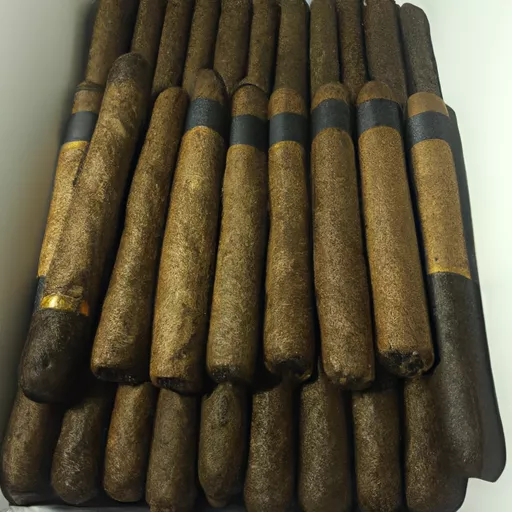
As a lover of cigars, I have always been curious about the world of little cigars. These smaller, more compact versions of cigars have gained popularity in recent years, and I wanted to delve deeper into what makes them unique and worth trying. In this article, I will share my findings on little cigars, their history, the different types available, and why they are a great alternative for cigar enthusiasts.
First, let’s start with the basics. Little cigars, also known as cigarillos, are smaller versions of traditional cigars. They usually measure around 3-4 inches in length and have a ring gauge of 20-30, compared to the average 6 inches and 42 ring gauge for regular cigars. This smaller size makes them great for quick breaks or as a substitute for a full-sized cigar when time is limited.
Little cigars have been around for centuries, with their origins believed to date back to ancient times. In the 19th century, they were popular among soldiers and sailors who wanted to indulge in a cigar without having to spend too much time smoking it. However, it wasn’t until the late 20th century that little cigars gained mainstream popularity, thanks to their convenience and affordability.
Today, there are two main types of little cigars – natural and flavored. Natural little cigars are made with tobacco leaves and use a similar process to traditional cigars. On the other hand, flavored little cigars use a mix of tobacco and various flavorings like vanilla, cherry, and chocolate to add a different dimension to the smoking experience. Some avid cigar enthusiasts may turn their noses up at flavored cigars, but for those who enjoy a hint of sweetness in their smoke, little cigars are a perfect fit.
When it comes to the smoking experience, little cigars offer a milder taste compared to regular cigars. The smaller size and thinner wrapper mean that the smoke has less time to mature, resulting in a smoother, more subtle flavor profile. This makes them a great choice for beginners or those who prefer a less intense smoking experience.
One of the most significant advantages of little cigars is their affordability. They are significantly cheaper than traditional cigars, making them a budget-friendly option for cigar enthusiasts. Plus, since they are smaller in size, their tobacco content is lower, making them a healthier alternative as well. However, it’s essential to note that like any other tobacco product, little cigars still contain nicotine and should be consumed in moderation.
In terms of availability, little cigars can be found in most tobacco shops and convenience stores. They come in packs of 10-20 cigars, making them easy to grab and go. The packaging is also more compact, making them convenient for travel or a quick smoke break.
Now, let’s dive deeper into the different types of little cigars. As mentioned earlier, natural little cigars use tobacco leaves as the main ingredient. These cigars are known for their earthy and woody flavors, with a touch of spice. Some popular natural little cigars include Swisher Sweets, Al Capone, and Black and Mild.
On the other hand, flavored little cigars can cater to a wide range of tastes. If you have a sweet tooth, you can opt for fruit-flavored little cigars like grape, strawberry, and peach. If you prefer something more unconventional, there are also coffee, rum, and even cognac flavored options available. Flavored little cigars are perfect for those looking for a unique smoking experience.
In addition to their taste, little cigars vary in their shape and filtering. Some brands offer a straight shape, while others have a slightly curved form to mimic traditional cigar shapes. As for filtering, some little cigars have a filter, while others do not. It all depends on personal preference and the smoking experience one is looking for.
One of the most significant differences between little cigars and traditional cigars is the way they are smoked. Unlike traditional cigars, which are usually cut and lit at one end, little cigars have a cap at both ends. To smoke a little cigar, you need to snip off the end where you would usually place your mouth and light the other end. This can take a bit of practice, but once you get the hang of it, it becomes second nature.
Finally, let’s discuss the etiquette of smoking little cigars. While there are no hard and fast rules, there are a few things to keep in mind to enjoy your little cigar to the fullest. As with any cigar, it’s essential to cut and light it properly. Use a cigar cutter to make a clean cut on the end, and a lighter or matches to light the other end. It’s also important to take your time and savor the flavors, as little cigars have a shorter smoking time compared to traditional cigars.
In conclusion, little cigars may be small in size, but they offer a big smoking experience. Whether you’re a beginner or a seasoned cigar enthusiast, they make for a great alternative to traditional cigars. With their affordability, convenience, and variety of flavors, little cigars have gained their rightful place in the cigar world. So go ahead and give them a try, and who knows, they may become a permanent addition to your cigar collection.